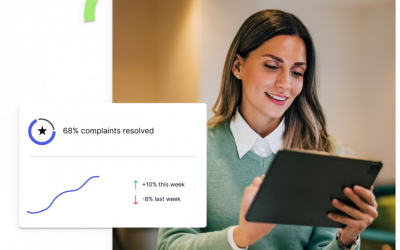Where do you find the best information on workforce analytics? At a workforce analytics conference! ZeroedIn was recently a sponsor of the HCI Workforce Planning and Analytics conference in Atlanta, where interested parties could meet and discuss the connection between workforce analytics and workforce planning.
The event was a great success, with a number of valuable talks and sessions. For those who couldn’t attend or wanted additional insights into the material, ZeroedIn and HCI held a post-conference webinar to summarize key takeaways from the conference.
During the webinar, we held three polls to get a snapshot of where our viewers stand with their workforce analytics. By the end of the webinar, we had information on three areas: the tools viewers use to support workforce analytics, the development level of viewer’s workforce analytics programs, and the key areas that viewers considered the most important for applying analytics. The results are in:
Poll 1: What is your primary tool for supporting workforce analytics?
Results: You can see the results in the table below, but the most common response by far was “Microsoft Excel or spreadsheets.” Sixty-eight percent of respondents use that option as their primary tool for supporting workforce analytics. Coming in second and third were “Business intelligence tools” and “Workforce analytics” tools, with 18% and 13%, respectively.
| Primary Tool Supporting Workforce Analytics | % of Total |
|---|---|
| Microsoft Excel or spreadsheets | 68% |
| Business intelligence tools | 18% |
| Workforce analytics tools | 13% |
| Freely available analytics tools | 0% |
| Other | 1% |
Poll 2: Our workforce analytics practice is…
Results: We asked participants to choose one of five possible words to complete the sentence describing their workforce analytics practice. Results are in the table below, with a most common answer of “developing,” followed far behind by “lacking” and “non-existent.” Only 7% of total participants described their program as either “mature” or “robust.”
| Our workforce analytics practice is… | % of Total |
|---|---|
| Developing | 62% |
| Lacking | 21% |
| Non-existent | 10% |
| Mature | 6% |
| Robust | 1% |
Poll 3: Rank the areas where you are applying analytics in order of importance
Results: The top three areas where respondents apply analytics were performance, attrition, and workforce planning. You can see full results in the table below.
| Rank the areas where you are applying analytics in order of importance | % of Total |
|---|---|
| Performance | 1st |
| Attrition | 2nd |
| Workforce planning | 3rd |
| Compensation | 4th |
| Succession planning | 5th |
| Diversity and inclusion | 6th |
| Skill analysis | 7th |
| Learning impact | 8th |
It’s good to know what tools other companies are using for their workforce analytics, but the key to a successful program is a combination of automation, power, and ease of use. Need some guidance? Schedule a demo with ZeroedIn Workforce Intelligence and learn how to develop, share and grow your workforce analytics program.




